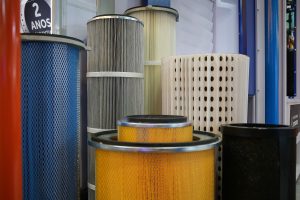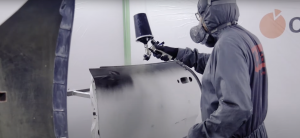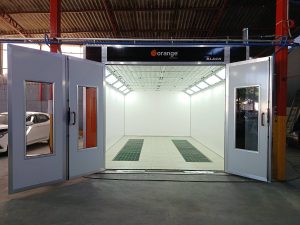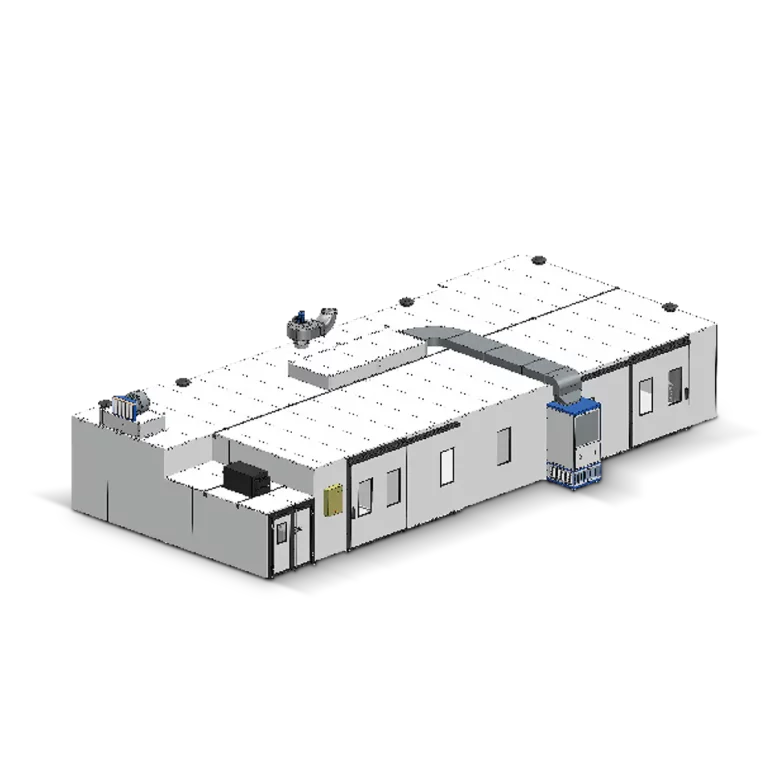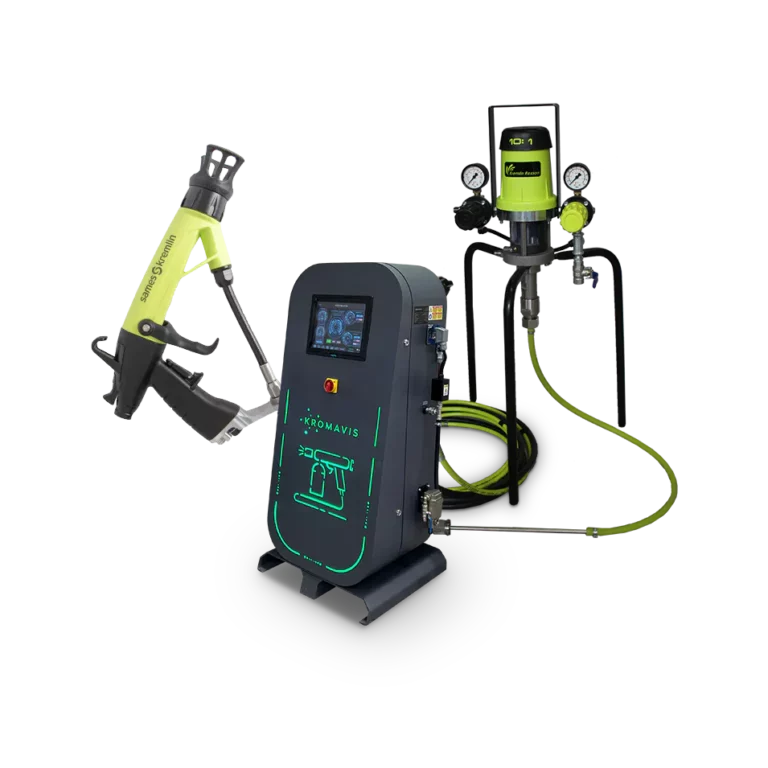In the industrial and automotive sectors, surface painting plays a crucial role in the aesthetics and protection of finished products. To carry out this process effectively, paint booths play a key role, providing the controlled environment necessary to apply coatings uniformly and safely.
However, choosing between an electric paint booth and a diesel paint booth is a critical decision that can significantly influence operational efficiency, costs, environmental emissions, and the quality of the final job.
In this context, we'll explore the key differences between these two types of paint booths, providing insight into the specific needs of your application. Next, we'll examine the key aspects of each booth type, from power sources to operating costs and environmental implications, to guide you toward the best choice for each situation.
Electric Paint Booth
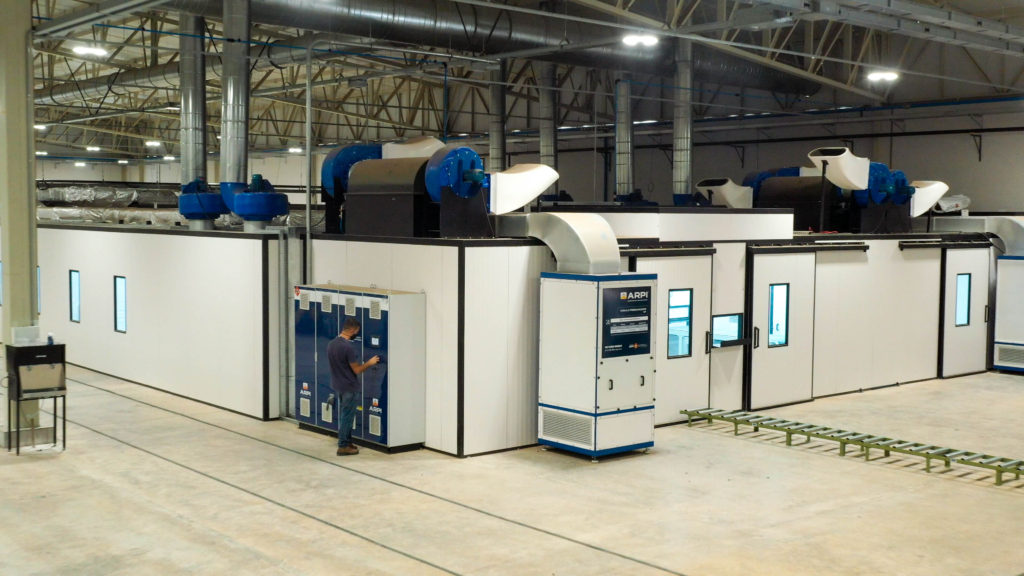
Electric paint booths, as the name suggests, use electricity as their primary energy source and, consequently, they are powered by a standard electrical grid, but can also be operated by an electric generator.
Because of these characteristics, electric cabins produce fewer polluting emissions compared to other models and, depending on the energy source used, can be more environmentally friendly.
Despite the energy costs, they tend to have lower operating costs and, in most cases, require less maintenance, due to the simplicity of electric motors.
Therefore, electric booths can be more energy-efficient, especially if the electricity comes from renewable sources. They also tend to be quieter, which can be a benefit in the workplace.
Diesel Paint Booth
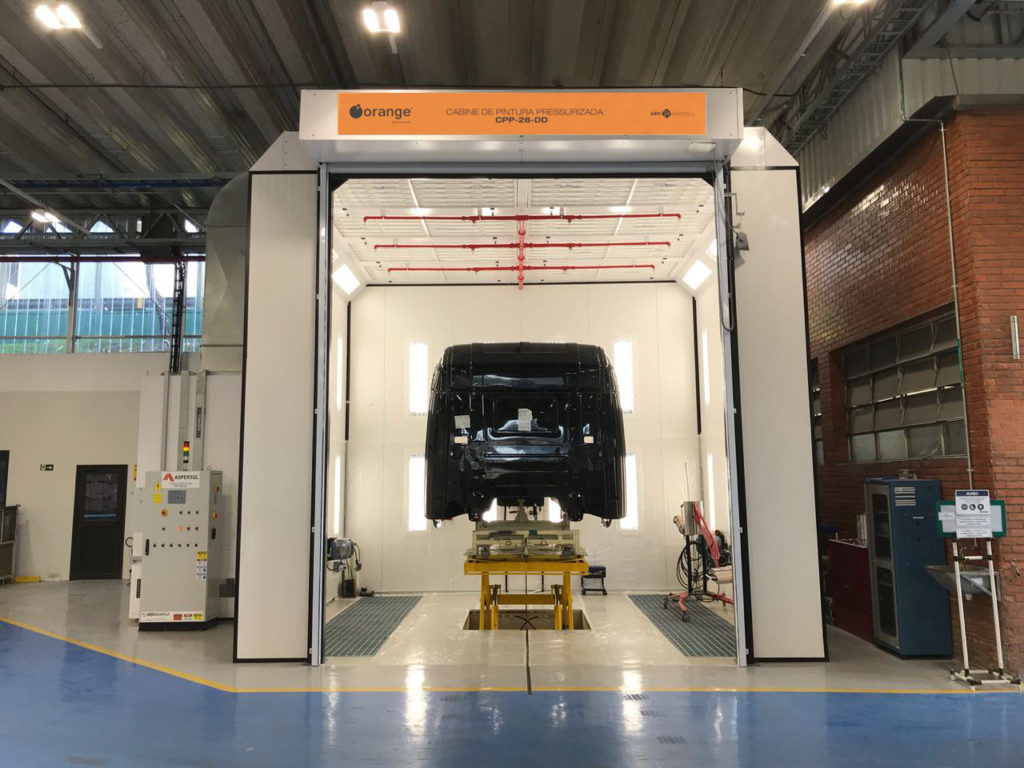
Using a diesel engine as the main power source, this type of cabin may be less convenient in some situations, especially in ecological terms, as they produce more significant emissions of pollutants such as nitrogen oxides and other particles.
Additionally, they tend to have higher operating costs due to the price of diesel and more frequent engine maintenance. This type of cabin requires regular engine maintenance, including oil changes and exhaust system maintenance.
Important advantages include the ease of transport and use in remote locations where electricity is limited. Diesel engines also tend to be more powerful, which can be advantageous in industrial applications requiring high air pressure or ventilation.
Diesel fuel tanks have a considerable capacity, allowing for long periods of continuous operation without the need for frequent refilling, which can be useful in operations that require lengthy painting processes. In some heavy industrial applications, where electricity consumption would be very high, a diesel-powered paint booth may be more economical in the long run.
While diesel engines require regular maintenance, this maintenance is relatively simple and well-known, involving oil changes and exhaust system maintenance. This can make maintenance easier compared to more complex electrical systems. Diesel engines are known for their durability and long lifespan when well-maintained, which can result in a reliable long-term investment.
Therefore, the choice between an electric paint booth and a diesel paint booth will depend on the specific needs of your application, considering factors such as operating costs, emissions, power availability, and energy efficiency. The final decision must consider the balance between efficiency, cost, and environmental impact.
To learn more about industrial painting and other content on painting and finishing, visit the rest of our blog, always with new and exclusive content.

